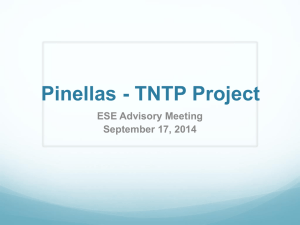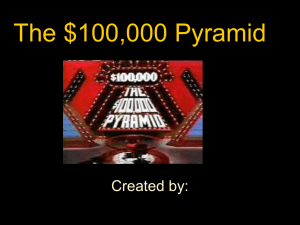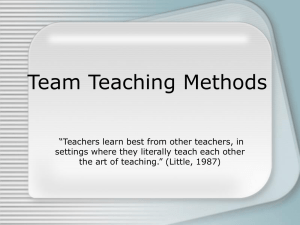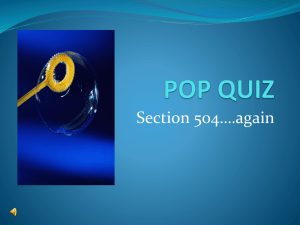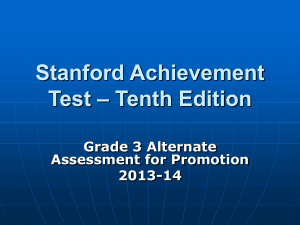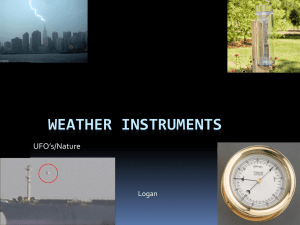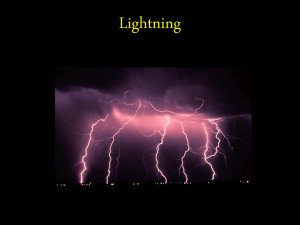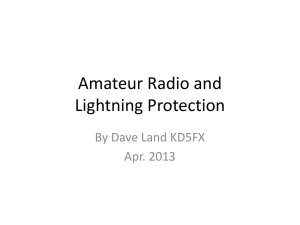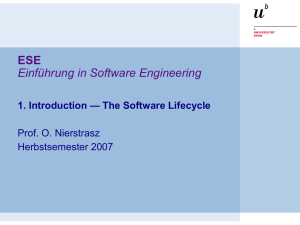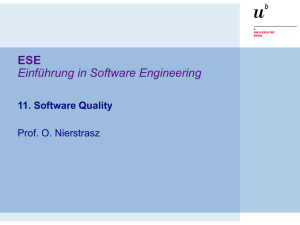marking tests
advertisement
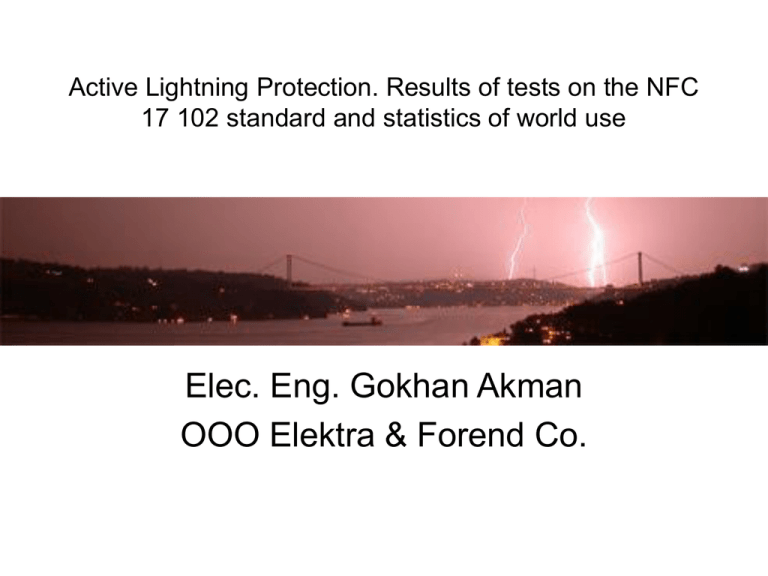
Active Lightning Protection. Results of tests on the NFC 17 102 standard and statistics of world use Elec. Eng. Gokhan Akman OOO Elektra & Forend Co. Active lightning protection (results of tests on the NFC 17 102 standard and statistics of world use) • NEW EDITION OF ESE STANDARDS • • After many years of application of ESE standards in Europe (the first standard for ESE: NF C 17-102 standard, has been published in 1995) and worldwide it has been decided to revise the three standards from France, Spain and Portugal in a parallel procedure based on a Franco-Spanish working group that has been followed carefully by Portugal. This NFC C 17102:2011 standard is now approved in France and at the time of writing the paper, the Spanish standard UNE 21186:2011 has just passed the national public enquiry and is going to be published approximately in two weeks, and Portugal standard NP4426-2 is on the approval procedure. There are many new things in the standard and most of them are coming from IEC and EN 62305-3 standard. As a matter of fact, there is no reason why a Lightning Protection System based on ESE should behave differently from other systems. This paper will then concentrate on the new items and especially those related to ESEs. THE TECHNICAL CHANGES • Standards from series IEC 62305 or EN 62305 (international or European) are “installation” standards: they explain how to select, install and control the Lightning Protection Systems. These LPS use components (rods,conductors, earthing rods etc.) that need to be compliant with “product” standards: series IEC 62561 or EN 50164. • On the reverse French standard NF C17-102:1995 as well as its 2009 version is mainly a “product” standard. However , in 1995 version tests were only related to efficiency tests able to determine the efficiency of the ESE: ∆T. 2009 version has been introduced to harmonize the requirements of 17-102 standard with those of IEC 62305. Nevertheless some requirements form 17-102 had to be more severe than those of simple rods to guarantee good operation of ESE. • It has been decided in 2009 to launch a new version of standard 17102 because the 2009 version didn’t allow to homogenize fully standards 17-102 and 62305, the 17-102 standard having kept the 1995 structure. • There is no reason for simple rod (SR) installation rules to differ from ESE installations rules, except for ESE particularities (protection model, good earthing impedance to allow ESE to work properly, etc.). Revision has started based on a request from CENELEC (European Standard Committee). What are the main principles that are included in 2011 version of the standard??? • First of all the tests of the “product” standard had to be more complete. An ESE contains electrical components that are located near the lightning impact: it is then rather logical that an ESE be submitted to tests at least as severe as the component of any other LPS. • Selection of ESE should be based on a risk analysis as described in IEC 62305-2 • Its installation should be compliant with IEC 62305-3 except when more severe requirements are necessary. What’s NEW??? • Risk assessment is described in IEC 62305-2. • An ESE is only a component of a LPS: all components are important and shall comply with IEC 62561 or EN 50164 standards. • ∆T is limited at 60 μs whatever is the value obtained during tests. • The protective area is no more a simple cylinder but is a sphere. This means that some areas protected according to 1995 version of NF C 17-102 are no more protected especially for tall buildings. • Protection for tall buildings over 60 m is now included in the scope: - protection of the last 20% of the structure (or any point higher than 120 m) by ESE or any other appropriate mean -In addition, at least 4 down-conductors, interconnected by a ring conductor, shall be used, distributed along the perimeter and, if possible, at each corner of the building. What’s NEW??? • Number of down-conductors: Number of down conductors for a non-isolated LPS, each ESE shall be connected to at least 2 down-conductors. • Earthing System: -Earthing resistance shall be as low as possible and < 10 Ω. ESE Using Map on World wide Standards Worldwide • This page provides information on the main standards (and technical régulations) in use worldwide. Focus on the New Range of tests For the ESE Technology • Since very long time, the ESE Technology has been the target of an important lobbying in favor of the said conventional lightning protection system. The critics use to be the same: • The critics on the first version of the standard tests use to be the same. It was said that they are too large in their definition • In order to answer those critics, the French committee has work on a new version of the NFC 17-102 standard. This latest edition has been published in 2011. HIGH VOLTAGE LABORATORY TESTS ACCORDING TO LIGHTNING PROTECTION STANDARDS • High voltage laboratory research has been a powerful tool for lightning research in the last decades although today it has been somehow forgotten compared to other research activities such as natural lightning measurements or theoretical modeling. On the other hand, standard testing of lightning protection components can only be performed at High Voltage laboratory facilities at present. There is no standard test of lightning protection performance under natural lightning conditions. The advantage of a laboratory is that testing parameters such as applied voltage or current, ambient conditions and geometrical configuration can be controlled. • Besides, testing at a high voltage laboratory provides a statistically significant amount of data. Obviously, natural lightning conditions cannot be fully achieved at a high voltage laboratory but some parameters can be fairly reproduced. Although lightning is a large scale phenomenon, laboratory tests offer a good opportunity to test and perform research about lightning protection. In this paper we will present two main important laboratory testing arrangements and a summary of the standards procedure. New trends and suggestions for improved future tests of lightning protection components will be discussed. NFC 17 102 Testing Procedures • GENERAL TESTS • MECHANICAL TESTS • ENVIRONMENTAL TESTS • ELECTRICAL TESTS • EARLY STREAMER EMISSION TESTS GENERAL TESTS • DOCUMENTARY INFORMATION AND IDENTIFICATION Visual Inspection according to the requirement of NFC 17.102 C2.1.2 (Name, logo and mark etc) • MARKING TESTS Marking tests carried by the use of Hexane Aliphatic. The test is carried out by rubbing the marking by hand for 15 s with a cotton rag dipped in waterand for 15 s more with a cotton rag dipped in hexane aliphatic. MECHANICAL TESTS • Based on manufacturer’s data • Section compliant to EN 50164-2 • Striking point with a section of 200 mm2 • If such conditions are achieved, it assures as a good behavior and flow of the current through the ESE ENVIRONMENTAL CONDITIONING • SALT MIST TREATMENT Spray test according to EN60068-52 standard • HUMID SULPHUROUS ATMOSPHERE TREATMENT Test in a humid sulphurous atmosphere according to the EN ISO 6988 standard with seven cycles and a sulphur dioxide concentration of 667 ppm (in volume). Each cycle lasts 24 hours and includes an 8-hour heating period at a temperature of 40°C ± 3°C in a saturated humid environment followed by a 16-hour standing period. After this standing period, the humid sulphide atmosphere is restored. CURRENT WITHSTANDING TESTS • After environmental pre-conditioning and without the sample being cleaned, the ESEAT is subjected to the following tests. • Iimp Impulse current test • The Iimp test impulse is defined by Ipeak, Q and W/R. A unipolar current impulse shall reach these parameters within 10ms. CURRENT WITHSTANDING TESTS • The sample shall be subjected three times to a test current given in below table. The time-slot between each test shall enable the sample to cool down at room-temperature. • Value of current Iimp • Ipeak(kA) • Q(A.s) • W/R(kJ / Ω ) • 100 • 50 • 2 500 • Test endorsement The sample passes the test if the voltage / current recordings and the visual inspection do not reveal any indications of deterioration or perforation of the sample, except the parts that drain off the lightning current where traces of emission and superficial fusion can appear. EARLY STREAMER EMISSION TESTS • The reference standard for testing procedures is EN 61180-1. The ESEAT shall be installed and connected electrically according to manufacturer instructions. • During the tests, no maintenance or disassembly of the ESEAT is authorised. It shall be seen that appropriate testing techniques are necessary for crash tests and measurements, in order to ensure that the correct test values are recorded. Experimental set up of SRAT single rod air terminal Dimensions of the test assembly • The height of the air terminals (h) exceeds or equals 1m. The difference of height between the two terminals shall be less than 1% • The distance between the upper plate and the ground(h) shall exceed 2m. The h/H ratio shall range between 0,25 and 0,5 • The smallest horizontal dimnesion of the upper plate is the distance between plate and ground (H) • The 28mm diameter rod, the air terminal support, rests on a square support with a 0,2m side. • The following figures represent the two test confifurations that correspond respectively with the testing of the reference SRAT (defined in up) and testing of the ESEAT. SRAT vs. ESEAT EXPERIMENT CONDITIONS • The effectiveness of the ESEAT is measured by comparing it to SRAT’s emission time of the ascending tracer in a high voltage laboratory. • 1) WAVE SIMULATION • The natural wave that exists before a lightning strike has consequences on the forming conditions of the corona and preexisting space-charge. It is therefore necessary to simulate it by applying a direct current that creates an electric field between the plate and the ground ranging between -20 kV/m and -25 kV/m. • 2) IMPULSE FIELD SIMULATION • The impulse field may be simulated by a switching impulse which rise time ranging between 100 μs to 1000 μs. The waveform slope when the upward initiates should be between 2.108 and 2.109 V/m/s. A typical waveshape is 250/2500 as per IEC 60060-1 (only the tolerance on the front is important). • 3) QUANTITIES TO BE INSPECTED – MEASUREMENT TO BE CARRIED OUT. • ELECTRICAL PARAMETERS • The electrical parameters to be inspected and recorded are the shape and the magnitude of the voltages applied (calibration of the ambient field, impulse voltage wave,associated current) for the SRAT and the ESEAT • The following should be adjusted to achieve this. • The continous polarizing voltage • The impulse wave that triggers the emission on the single rod air terminal: the voltage to be applied is determined using a simplified «up and down» procedure so as to obtain the value U100 with a final precision of 1% • GEOMETRICAL CONDITIONS • Distance d shall be strictly the same (+/- 1mm) for each test configuration; it is inspected before each configuration. • CLIMATIC PARAMETERS • The climatic conditions ( Pressure,temperature,relative humiditiy) shall be recorded at the beginning and the middle of the tests of each series and at the end of the tests for the test configuration. In order for the test configurations of the SRAT and the ESEAT to be considered identical ( same U100 voltage), the variations of the climatic parameters shall comply with the values defined in the table below. Otherwise, it is necessary to re-measure the U100 voltage before the next configuration. • • • • • Variation of the climatic parameters during the tests Parameter Variation for both test configurations Pressure +/- 2% Temperature +/- 10°C Relative humidity +/- 20% • The values are recorded in the test report but do not lead to corrections. • NUMBER OF IMPACTS PER CONFIGURATION • For each configuration, the first 50 usable impacts will be recorded.(Example of a non-usable impact: pre-starting of the generator) The standing time between two impacts shall equal 2 minutes. This value should be maintained throughout the tests. ESE Statistics in world wide • An empirical study of effectiveness has been done on the European-made ESE lightning protection systems installed worldwide in accordance with the national standards in force at Europe for this type of LPS. • For this aim, the following data have been taken into account: • European statistics about the amount and years of service of ESE manufactured in Europe. • Medium size building world type and world Ng established. • Number of lightning discharges that are expected to hit the protected buildings and structures. Calculation has been made in accordance with established risk analysis of IEC/EN 62305-2, as well as ESE national standards. • Number of tolerable bypasses for the different protection levels under the above mentioned regulations. ESE Statistics in world wide • The International Lightning Protection Association (ILPA) gives statistical data about the ESE Air Terminal that have been manufactured, according to the national standards, in Europe, The data are following. • In 1986, which is the first year of available statistics, number of ESE was 4088 when in 1996 it was already a cumulated number of 112412 units. • In 2009 the cumulated number of installed units is 550 000. • Total number of ESE units per years is now 4 652 000 . This means that experience is very long and important. ESE Statistics in world wide • The study shows that during the equivalent accumulated experience of 4,652,600 years of service of these 550,000 ESE LPS, 174,473 lightning discharges were expected on the protected facilities. According to the available data, the assessment of incidents to the referred premises is negligible: very small amount, insignificant material damages and no personal injuries. It is very important to highlight that the number of these rare incidents are much smaller than an order of magnitude with respect to the most restrictive level accepted by the rules outlined. • Furthermore, this paper provides an interesting analysis of the lightning protection areas of these ESEs when compared with the protection areas obtained if they were considered just as mere simple Franklin rods. The result of this comparison indicates that in the latter case more than 165,000 lightning discharges would not have been intercepted and therefore should have caused damage to protected structures, hence thousands of claims. Obviously this is not the case. • In short the study describes 25 years of safe and effective ESE lightning protection experience, demonstrated by the 4,5 million accumulated service years of more than 550,000 units installed worldwide, many of them installed in countries with the highest rate of annual lightning storms. On the other hand ESE European national standards have also shown to be safe, effective, practical and useful. • The authors would also like that this document lessens the shortage of data and statistical studies about existing lightning protection system installations and their effectiveness. Thank You for listen me! BIBLIOGRAPHY • New edition of ESE Standards Fernanda Cruz, Olivier Trousse, Ana Mariblanca Sánchez (CTE81 Committee Chairman Portugal; UTE France; AENOR Standardization Division Spain) • AENOR . UNE 21186 Diciembre 2011 Proteccion contra el rayo: Parrarayos con dispositivo de cebado • Environmental tests – Salt mist treatment, IEC 60068-2-52, December 1996 • NFC 17 102 Protection of structures and open areas against lightning using early streamer emission air terminals 2011 • Effectiveness of Worldwide Existing ESE Lightning Protection Systems Manufactured in Europe V.Pomar, S.Polo , S.Fauveaux • Michael Troubat, Focus on the new range of tests for the Early Streamer Emission air terminal technology. • IPSOS: Satisfaction survey “Lightning Protection” Questionnaire GIMELEC/INERIS/MEDD 2002 • Metallic covers – Test in the sulfur dioxide with general condensation of the humidity, EN ISO 6988, April 1995

